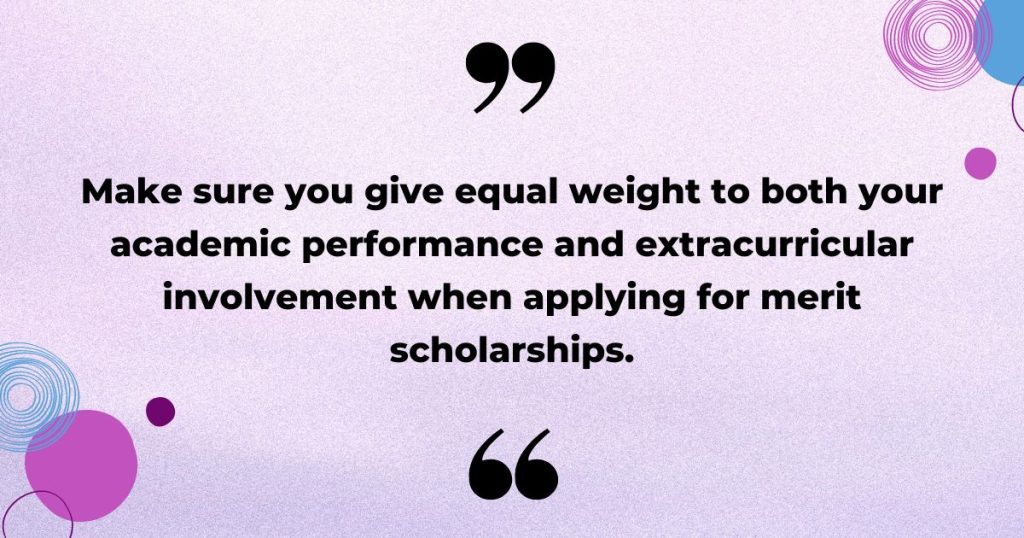
Studying abroad offers countless opportunities for personal and professional growth, but financial constraints can hold many students back. Fear not, future global citizens! In this blog post, we’ll guide you through the world of finding financial aid for international students, exploring scholarships, grants and student loans to make your dream of studying abroad a reality.

Four primary options exist for college students seeking financial assistance to study in the U.S.:
Bear in mind that federal student loans are not available for international students, but don’t worry – there are still plenty of resources at your disposal.
What students need to know about each resource in a nutshell:
Let’s dive deeper into each option.
Scholarships are like the golden ticket of financial aid. They’re merit-based or need-based awards that don’t require repayment. With thousands of scholarships available globally, your chances of finding the perfect fit are quite promising. IEFA (International Education Financial Aid) is a free online resource that can serve as your faithful companion in the quest for scholarships. By creating a profile on IEFA, you can discover a plethora of scholarship opportunities, ensuring you don’t miss out on any potential financial support.

Not only does IEFA simplify the scholarship search process, but it also provides access to information on international student loan options. So whether you’re a high school student looking to fund your undergraduate studies or a graduate student seeking assistance for your master’s or doctoral program, IEFA has got you covered.
Grants are need-based forms of financial assistance that don’t need to be repaid as long as the grant’s requirements are met. While eligibility requirements for grants vary depending on the provider, they’re generally awarded based on financial need, academic merit or a combination of both. The application process may involve filling out forms, submitting documentation such as transcripts and financial statements and providing letters of recommendation.
Keep in mind that grants are usually awarded on a one-time basis and may not be renewable. Additionally, grants often come with specific stipulations, like maintaining a certain GPA or completing a set number of community service hours. However, the extra effort required to secure a grant can be well worth it, as they can significantly reduce your financial burden.
Federal student loans are government-funded loans that offer favorable terms, such as fixed interest rates and income-driven repayment plans. However, these loans are not available to international students, as they’re reserved for U.S. citizens or eligible noncitizens.
Don’t be disheartened! There are alternative options available for international students, which we’ll explore in the next section.

Private student loans are offered by banks and other financial institutions with terms and interest rates that can vary significantly. These loans are designed to bridge the gap between the cost of education and the financial aid received from scholarships, grants and federal loans.
For international students, obtaining a private student loan often requires a U.S. cosigner with a good credit history. This cosigner acts as a guarantor, taking on the responsibility of repaying the loan in case the borrower fails to do so.
Fortunately, there are private loans of up to US$100,000 that do not require a cosigner or collateral. You can check your eligibility for a no-cosigner and no-collateral loan using our international student loan eligibility checker.
Your school might allow you to work part time right on campus to supplement your income. This can be a great way to earn some money to help pay for school expenses. Plus, you’ll get real work experience at the same time. To find out if your school offers this, check out their official website or speak to the financial aid office. Remember to make sure your visa allows you to work.
While international students aren’t eligible for federal financial aid, there are other types of financial aid available. To secure the best possible financial aid package, it’s essential to start researching early, use online resources and consult your school’s financial aid office.
Starting your financial aid research early can provide you with a competitive edge in the race for funds. By familiarizing yourself with the various financial aid options well in advance, you can ensure you don’t miss any deadlines and give yourself ample time to gather the necessary documentation.
Early research also allows you to identify and apply for a wider range of college scholarships and grants, increasing your chances of securing the funds needed to attend your dream graduate school.
In the digital age, a world of financial aid opportunities and free visa support letters is just a few clicks away. Online resources like Fastweb and eduPASS can help you discover scholarships and grants specifically tailored to international students. These platforms allow you to search for financial aid based on factors such as nationality, field of study and level of education.
Your school’s financial aid office can be an invaluable resource in your quest for financial assistance. These offices can provide detailed information about the various types of financial aid available at your school, as well as guidance on the application process and eligibility requirements.
Additionally, they can inform you about any school-specific scholarships or grants that may be available to you.

Now that we’ve explored the various financial aid options available to international students, it’s time to discuss strategies for maximizing your awards. In this section, we’ll cover tips for comparing financial aid offers, participating in work-study programs and budgeting wisely to ensure you make the most of your financial aid package.
When comparing financial aid offers, it’s important to consider the total cost of attendance, including tuition, fees, room and board and other expenses. Additionally, you should look at the types of aid offered, such as grants.
When you receive financial aid offers from different schools, it’s important to carefully compare them to make an informed decision.
As you compare, assess the:
By taking the time to thoroughly evaluate each offer, you can make a judicious decision that best suits your financial needs and long-term goals.
Work-study programs offer a unique opportunity for college students to earn money for their education while gaining valuable work experience. These programs, often offered by universities and colleges, provide part-time jobs on or off campus that can help cover various college expenses.
By participating in a work-study program, graduate students can not only reduce their reliance on student loans, but also enhance their resume and develop essential skills for their future career.
Effective budgeting and money-saving practices can significantly impact your financial well-being during your international education journey. Start by creating a realistic budget that accounts for essential expenses, such as tuition, housing, transportation and groceries. Look for ways to cut costs, such as utilizing student discounts, buying used textbooks and cooking meals at home instead of dining out.
In addition to budgeting, it’s important to develop good saving habits. Set aside a portion of your income from part-time work or work-study programs for emergencies and unexpected expenses. By maintaining a healthy balance between spending and saving, you can minimize your reliance on student loans and set yourself up for financial success in the future.
Securing financial aid as an international student may seem like a daunting task, but with the right resources and strategies, it’s possible to overcome financial barriers and make your dream of studying abroad a reality. Resources include: scholarships, grants, private student loans and work-study programs. Remember to start your research early, compare financial aid offers and practice sound budgeting and saving strategies to maximize your financial aid awards. Now, go forth and conquer the world of financial aid – your international education adventure awaits!
Figuring out your financial aid is a multistep process. First, start by reviewing the college’s cost of attendance and understanding your expected family contribution. Then, check your award letter to understand how much money you are receiving from the college, the state and the federal government in the form of grants, scholarships and/or loans.
Finally, research other sources of financial aid such as scholarships and grants to help fund your education.
Financial aid for college or career school can be divided into four main categories: scholarships, grants, loans and work-study. These are all important sources of funding that students should consider when planning their education and finances.
Scholarships are not repaid and are typically awarded based on academic merit or other criteria, such as community service or leadership. Grants are typically based on need and generally are not repaid. Loans are borrowed money that must be repaid, and work-study allows you the opportunity to earn an income to help pay for expenses.

The world of merit scholarships is vast and filled with opportunities to help you achieve your dreams of higher education without financial burdens. In this blog post, we’ll guide you through understanding, finding and applying for merit scholarships.

A merit scholarship is a financial award given to college students based on their academic achievements or other talents in a specific field.
Unlike need-based financial aid, merit-based scholarships are awarded based on academic achievement, extracurricular activities and other criteria, such as leadership skills or community involvement. Merit scholarships are an excellent way to fund your college education. These merit awards can help relieve some of the financial burdens that often accompany a college education, allowing students to focus on their academic success and personal growth.
Merit scholarships come in many forms, from generous scholarships offered by colleges and universities to partial awards provided by private organizations and foundations. To help find the right one for you, let’s dive deeper into the criteria and types of merit scholarships available.

The criteria for merit scholarships can vary and generally revolves around a few key factors. Your grade point average (GPA) is often a significant consideration with the minimum requirement usually starting at 3.0, although this may vary. In addition to your GPA, standardized test scores, such as SAT or ACT results, are commonly considered as well.
Beyond academic achievements, merit scholarships also consider your extracurricular activities and demonstrated leadership skills. For example, serving as an officer or team captain in student organizations, sports, honor societies, community groups or jobs can showcase your leadership abilities and increase your chances of securing a merit scholarship. So, make sure you give equal weight to both your academic performance and extracurricular involvement when applying for merit scholarships.
There are several types of merit scholarships available to talented students with a wide range of interests and achievements. Merit scholarships may be offered by colleges and universities themselves, private corporations or foundations, and local or community-based organizations.
The National Merit Scholarship Program is an esteemed program which recognizes the best high school students in the country. Those who qualify are rewarded with scholarships based on their exceptional PSAT and SAT scores. Applicants must satisfy certain criteria to be eligible. They must be U.S. citizens or permanent residents in high school and have taken the Preliminary SAT/National Merit Scholarship Qualifying Test (PSAT/NMSQT) by their junior year.
With various tiers and awards available, the National Merit Scholarship Program is just one example of the many merit scholarships that can help support your college education.
A little research and persistence will uncover a treasure trove of scholarship opportunities. Always start with your school’s financial aid office. It’s a great resource. Next, search online using a search platform such as IEFA.org The site lists thousands of scholarships for international students. As you research, you’ll be able to create a list of potential merit awards tailored to your unique qualities and achievements.
Also, apply for partial scholarships. Partial scholarships will only cover a portion of your costs, but there are advantages that make the application effort worthwhile. Partial scholarships outnumber full scholarships. There’s less competition for partial scholarships, so you have a better chance of winning one, and there’s no limit to how many you can apply for. Having multiple partial scholarships can quickly add up.
Start by exploring your college or university’s website. Many institutions offer merit scholarships to incoming freshmen, current students and even graduate students. Some scholarships may be specific to a certain major, while others may cater to students with outstanding achievements in various fields. Be sure to explore pages for specific majors, offices of community or civic engagement, athletics and the arts for more specific awards.
Reach out to your assigned admissions counselor. Once they get to know you better, they can direct you to opportunities specific to your interests and skills.
Private organizations and foundations also offer merit scholarships with varying eligibility requirements. For example, the Terry Crews “Creative Courage” Scholarship is a $20,000 scholarship designed to support talented artists, while the BTL Athletes Scholarship is a $75,000 merit scholarship available to high school upperclassmen and undergraduate student-athletes from low-income backgrounds.
Search online and check the eligibility criteria of each scholarship before applying. Pay close attention to the application process, which may require a separate application, essays, recommendation letters and other evidence of exemplary performance.
Local and community-based scholarships can be a hidden gem in your scholarship search. These scholarships may have a lower applicant pool due to their more restrictive eligibility requirements, increasing your chances of success. For example, the Peter T. Buecher Memorial Scholarship is a $1,000 scholarship open to high school seniors or undergraduate students in Minnesota who play sports.
To find local and community-based scholarships, consult with your high school guidance counselors, college financial aid offices and community foundations. They can provide valuable information about scholarships that cater to your interests and achievements, giving you additional opportunities to fund your college education.

Applying for merit scholarships can be a competitive process, but with the right strategies, you can increase your chances of success. Next, we’ll go over three key strategies for a successful merit scholarship application: selecting the right scholarships, crafting a compelling essay and gathering strong letters of recommendation.
By employing these tactics, you’ll be better prepared to showcase your unique talents and achievements, making you a strong candidate for merit scholarships. Remember, the key to obtaining any scholarship is adhering strictly to the requirements. If you have any inquiries regarding a scholarship, it’s essential to contact the scholarship coordinator for further information.
Now, let’s dive into each strategy in more detail.
One of the first steps in applying for merit scholarships is creating a prioritized list of scholarship opportunities. This allows you to allocate your time and effort effectively, ensuring you submit the most competitive applications possible. After creating your list, read the directions carefully, adhere to the instructions and finish the application, including any required essays, interviews, or additional materials.
When searching for local scholarships, make sure you consider those tailored to your individual qualities, such as your interests, achievements, or background. By focusing on scholarships that align with your unique strengths, you’ll maximize your chances of being awarded the financial aid you need to pursue your college education.
A compelling essay can be the key to standing out in a competitive pool of applicants. Start the writing process early, allowing yourself ample time to reflect on your experiences, research the scholarship provider’s mission and purpose and seek feedback from others. Reading examples of successful scholarship essays can help you craft a personal and captivating essay.
In your essay, focus on any skills, talents, or unique experiences that differentiate you from other applicants, such as your personal experiences, achievements, or aspirations. By crafting an essay that showcases your unique qualities and aligns with the provider’s goals, you’ll increase your chances of securing the merit scholarship you desire.
Letters of recommendation are a crucial component of most merit scholarship applications, as they attest to your capabilities and potential. Consider asking individuals who know you and your talents, such as teachers, coaches, high school counselors, extracurricular advisors, job supervisors or members of church or community organizations.
It’s essential to submit your recommendation and nomination requests at least one month prior to application deadlines, and early submission is encouraged. By allowing ample time for your recommenders to craft thoughtful and compelling letters, you’ll enhance your chances of securing the merit scholarship you seek.
Once you’ve been awarded a merit scholarship, it’s important to understand the requirements and strategies for maintaining and renewing your scholarship. By keeping track of renewal requirements and implementing strategies for continued success, you’ll ensure you remain eligible for financial aid throughout your college education.
In this section, we’ll discuss the importance of adhering to scholarship renewal requirements and share strategies for ongoing success to help you make the most of your merit scholarships.

The renewal requirements for merit scholarships can vary and typically include maintaining a certain GPA, completing a minimum number of credit hours and demonstrating satisfactory academic progress. For example, a scholarship might require a minimum GPA of 3.0 and the completion of at least 12 credit hours per semester.
It’s crucial to stay informed about the renewal requirements of your specific scholarship to ensure you remain eligible for financial aid. By diligently maintaining your academic performance and adhering to the established criteria, you’ll be well-positioned to renew your merit scholarship and continue benefiting from its financial support.
To maintain success with merit scholarships, it’s essential to adhere to deadlines, maintain a high GPA and consider applying for additional private scholarships. By staying organized, prioritizing your academic performance and exploring additional funding opportunities, you’ll increase your chances of continued success in your college education.
Also, don’t forget to keep up with any continuing requirements from your school’s financial aid office and participate in extracurricular activities that showcase your commitment and leadership abilities. By staying proactive and consistently striving for excellence, you’ll be well-equipped to maintain and renew your merit scholarships throughout your college journey.
Consider the merit scholarship timeline when applying for and maintaining scholarships. Research application deadlines, notification timelines and acceptance timelines, so you’re well prepared to submit competitive applications and manage your financial aid effectively.
Timeliness is paramount when applying for merit scholarships. Application deadlines vary with each scholarship, so it’s essential to check the scholarship’s website for their deadlines. For example, the GE Foundation Engineering Scholarship Program for Freshmen has a deadline of early May, while the Ronald McDonald House Charities Scholarship usually requires applications to be submitted by the end of January.
To ensure you submit your applications on time, start the application process at least four months prior to the earliest deadlines. This will give you ample time to collect the necessary materials, write compelling essays and gather strong letters of recommendation.
The notification and acceptance timelines for merit scholarships varies depending on the particular scholarship and the institution offering it. Generally, you can expect to hear back about your application one to three months following the submission deadline.
By being aware of these timelines, you can plan accordingly and ensure you’re prepared to accept any scholarship offers you receive. Additionally, staying informed about the notification and acceptance timelines will help you manage your financial aid effectively and make well-informed decisions about your college education.
In conclusion, merit scholarships offer a wealth of opportunities for talented students to fund their college education while being recognized for their academic achievements and extracurricular involvement. By understanding the criteria and types of merit scholarships, researching and applying for the best opportunities and maintaining and renewing your scholarships, you can pave the way for a bright and successful academic future. So, go ahead and explore the top merit scholarships for 2023. Your journey to academic excellence and financial freedom awaits!
Maintaining a GPA of 3.5 or higher is usually required to qualify for merit-based scholarships, and a GPA of 3.75 or higher will make you a very competitive candidate.
Merit-based scholarships vary greatly but generally range from $1,000 at state schools to full rides worth as much as $35,000 annually. The Davidson Fellows Scholarship, one of the most competitive undergraduate scholarships in the world, awards up to $50,000. The average award amount is around $5,000, making this an excellent opportunity for students seeking financial support for their educational expenses.
Scholarships can be a great way to help pay for college, and merit-based scholarships are a great option for students who have achieved academic success. With the right research and application process, students can find scholarships that can help them cover the costs of their studies.
No, a merit scholarship typically does not provide full funding for tuition and other college expenses. While merit scholarships can help offset the cost of attendance, they are highly competitive and require applicants to demonstrate outstanding academic achievements or other talents in a specific field. Multiple partial scholarships could provide the funding you will need.
An academic scholarship is a financial award given to students based on their academic achievements or other criteria such as financial need. These scholarships are typically provided to support the student’s education and can be used for tuition, fees, books and living expenses.

Thousands of international students are drawn to the United States every year because of its educational opportunities.
American universities offer a wealth of resources and opportunities for students to learn, grow, and gain valuable experience.
Let’s find out what makes America different from other countries and what advantages it offers international students.

Studying in the U.S. means access to some of the best universities in the world. U.S. universities are known for their high academic standards, top-notch research facilities, and modern technology. Some of the top universities in the world, including Harvard University and Stanford University, to name just two, are located in the U.S.
Vibrant Campus life
Thanks to the diverse student community, international students can enjoy a vibrant social life while studying in the U.S. Campuses are full of activities and events to suit different interests. From career fairs to student groups to sports teams, there’s something for everyone. You won’t feel like an outsider and will have plenty of opportunities to meet other people from around the world.
Studying in the U.S. is not just about academics, it’s also about developing your own personal and professional skills. You will meet other students who hail from different communities, countries, and backgrounds. You can use this opportunity to learn more about the world, understand different cultures, and develop friendships with other students from around the globe. Your fellow students can be a valuable resource for networking and support.
Networking is key if you want to fulfill your personal and professional goals. You can join student groups, participate in career fairs, and attend seminars or conferences to meet people who may help you in your future endeavors.
If you take these opportunities you may be able to meet different employers, CEOs, and other influential people who can help you build a successful career.
U.S. universities offer a wide range of courses and programs taught by faculty members who are experts in their fields. Whether you are studying engineering, medicine, or business, you will be learning from some of the best minds in the world. You will have access to extracurricular activities, internships, English language skills, and other experiential learning opportunities that can help you further develop your skills.
You can take advantage of hands-on research opportunities, cultural trips, and more. You could also gain access to some of the most prestigious companies in the world for internship opportunities. This is invaluable when it comes to getting your first job after completing your studies as an international student.
Yes, it’s true that studying in the U.S. can be expensive, but don’t let that discourage you. There are many scholarships and financial aid opportunities available to international students. You can apply for university-specific scholarships, or private grants and loans to help cover your tuition costs.

Your international experience in the U.S. will be unlike any other. You will have the chance to try different cuisines, explore new cities and states, and attend festivals or events that you would not be able to experience anywhere else in the world. This is a great way to immerse yourself in American culture and develop a better understanding of this amazing country. From native speakers to foreign cultures, you will gain a better understanding of the world and expand your global network.
Studying in the U.S. will also give you a chance to improve your English language skills. You can take intensive courses or join conversation groups to practice and become fluent in the language. There are even programs available where international students can be paired with native speakers for language exchange opportunities. This is a great way to not only improve your language abilities but also to develop relationships with Americans.
Many employers around the world prefer to hire those who have had international experience. An American degree will give you a competitive edge, allowing you to demonstrate that you have acquired the skills and knowledge needed for success in today’s global economy. You will be able to move forward in your career and find rewarding opportunities both in the U.S. and abroad.
Studying in the U.S. or Canada can offer a high ROI for international students. According to salary surveys such as Glassdoor, and data provided by universities, the return on investment is clear. Take Musa, for example, a Ghanaian Junior Business Analyst earning less than $6,000 a year, could potentially secure an income in excess of $100,000 per year after an MBA.
Studying in America is more than just learning—it’s an opportunity to gain valuable life experiences and develop yourself both academically and professionally. With the right preparation, international students can make the most of their experiences in the U.S. and use them to build a successful future. So if you’re looking for an educational experience that will open doors to new opportunities, consider studying in America.

Financing for higher education in the U.S. can be very expensive. The average cost of tuition and fees for one year of college is over US$25,000. Plus, there are other expenses like textbooks, housing, food, and transportation that need to be factored into the equation.
Having a credit card can help international students make purchases without having to worry about carrying money and paying extra currency exchange fees. Timely repayment of these accounts can also help them build a credit history in the U.S., which is important if they want to apply for loans or other types of financing in the future.
If you’re in the U.S. and want to get a credit card, this article will shed light on everything you need to know about international student credit cards and how to apply for one.

A student credit card is a type of card that is specifically designed for students. It usually has lower interest rates, fewer fees, and may even come with rewards or additional benefits such as cash back on your purchases.
Student credit cards can be great for helping international students manage their finances while studying abroad in the U.S. when used properly – for example, avoiding overspending and making sure to pay off your balance in full every month.
However, it is important to note that most student credit cards require applicants to have a social security number or a U.S. address.
Credit cards for international students are similar to any other credit card in that they provide you with access to a line of credit. When you make a purchase, the money is automatically withdrawn from your card and then it is paid back at a later date with interest.

The difference between an international student credit card and a regular one is that most international student cards come with extra special features designed with the user in mind, such as travel and purchase protection, no foreign transaction fees, special student discounts, and more.
You can use the credit card for everyday purchases, such as groceries, gas, or even rent. However, international students should be careful not to use the card for purchases that they cannot afford because it could lead to unmanageable debt and damage their credit scores.
Here are some of the things that should be considered when choosing an international student credit card:
Most international students don’t even need a credit card, but still want one because everyone else has one. First and foremost, determine whether you need it or not. If yes, define your priorities. These could include:
Ask yourself these questions, and if you find there is a genuine need for a card, consider the best option for you.
While it is always ideal to pay off your outstanding balance to avoid interest, you should be aware of how your minimum payment obligation is calculated. At a minimum, lenders will require you to pay at least 1% of the balance back plus the interest that has accrued. However, some lenders may require you to pay 5-10% of the principal balance back every period.
A foreign transaction fee is a fee that is imposed when you purchase something in another country. Most international student credit cards waive these fees, so be sure to check the terms and conditions of the card before you apply.
An annual fee is the money you pay for the privilege of using a credit card every year.

Annual fees are an important part of a credit card, so you should check if there is one, and what the cost will be. Many international student cards have no annual fees, but if the one you’re considering does, keep in mind that it can add up over time because you pay the fee whether you use the card or not.
The most important factor to consider when choosing a credit card is the interest rate. Credit cards for international students often come with lower interest rates than regular credit cards, but it’s still important to compare different offers and select the one that has the lowest rate.
Interest charges can often be avoided if you pay off your outstanding balance every month. Interest accrues based on the interest rate in your agreement; the faster you can pay off the balance, the less interest you will incur on your account.
Before anything else, you will need a bank account to apply for a credit card. This can be complicated and time-consuming for international students, so make sure to check if the issuer offers an easy way to open an account.
Every credit card company is different and has different requirements for applicants. Before applying, make sure you meet all the requirements such as having a valid passport and SSN. One company might need SSN, but other companies might not require it – if you have a certain requirement restriction – so make sure to do your research.
Additional benefits such as cash rewards and travel points are nice features to have with a credit card, so check if the card you’re considering has any additional benefits. Every card has different features so compare them and see which one offers the most value for you. For example, a cash rewards credit card might be better for you than a travel points card.

Before you apply for a credit card, read the terms and conditions carefully. This will help you understand what fees, requirements, or restrictions are associated with the card before you commit to it.
Major credit bureaus such as Experian, Equifax, and TransUnion offer free credit reports. Check your credit report to see if there are any errors or discrepancies that could affect your chances of getting a credit card.
It’s important to compare different credit cards and pick one that best suits your needs. You can use comparison websites or ask a financial advisor for help in choosing the best credit card for you. You can also ask your friends and family members for their recommendations.
Once you have narrowed down your options, make sure to read the fine print and thoroughly understand all the terms and conditions before finally submitting your application.
These are the most important things to consider when choosing a credit card as an international student. We hope this guide will help you find the best card for you!

If you are an international student in the U.S., understanding the requirements and restrictions for credit cards is critical. Credit cards are an important part of financial independence and security, so it’s important to know what your options are.
Having a credit line can be especially helpful as an international student because timely repayments on these accounts can help you build your credit score and establish a financial record.
However, getting approved for a credit card can be more difficult for international students than it is for U.S. citizens. So, it’s always a good idea to do your research and find out what the requirements are before you apply.
In this article, we will discuss the requirements and restrictions for international students looking to get a credit card in the U.S.

International students can apply for a credit card from a number of card issuers even if they don’t have a Social Security number (more on this later). Depending on your exact circumstances, this could be relatively easy or a significant challenge. If you don’t have any luck with a traditional credit card, or if you prefer to skip that option, an alternative could be a “secured credit card.”
A secured credit card allows students from abroad to establish credit in the U.S. It is called a “secured” credit card because it requires the student to provide a security deposit to obtain it. This makes it easier for students to access funds.
The security deposit can be anywhere from US$500 – US$1,000 depending on the card issuer, and is often based on the amount of credit the student wants to have available. The main benefit of an international student credit card like this is that it helps the user build a positive payment history on their reports. This credit history can then help them secure loans, mortgages, and other lines of credit in the future.
International secured credit cards also often come with special benefits like discounts on travel expenses and cash-back rewards. Additionally, many cards charge low or no annual fees and offer competitive interest rates.
The requirements might vary depending on the issuing bank, but here are some of the common requirements for international students:

The first requirement for most credit card companies is having a U.S. bank account. You will need to provide the bank details to get the credit card. Also, it will be easier to manage your finances if you have a U.S. bank account. So make sure to do some research and get a bank account before applying for a credit card.
A secured card needs a security deposit. The bank usually requires the student to put down a minimum amount, which is usually between US$500 – US$1,000. However, it can vary from credit card company to credit card company, so make sure to read the terms and conditions before applying.
There are three major credit bureaus in the U.S., which are Equifax, Experian, and TransUnion. A credit card company issuing a non secured card will check the credit history of those who apply, including international students, to make sure they are able to manage their finances responsibly while in the U.S. A good credit score increases the likelihood that the applicant will be approved.
Although it’s not necessarily a requirement, it’s a good idea for international students to show proof of employment when applying for a credit card. Having a job in the U.S. can help increase the chances of getting approved, and it also demonstrates that the applicant is financially stable. Some companies might need you to show your individual taxpayer identification number (ITIN) as well.
Unsecured credit card providers will need to evaluate your ability to repay the outstanding balance, and may require a cosigner if you do not have regular income from employment.
Some credit card issuers will require international students to provide a U.S. Social Security number (SSN) in order to apply for the card. An SSN is also required for reporting taxes, so make sure you have one before applying for your credit card. If you don’t have your SSN yet, there may be alternative ways to prove your identity and creditworthiness to the company.

International students must hold a valid visa or residency permit in the U.S. in order to be eligible for an international student credit card.
These are some common requirements that international students must meet in order to be eligible for an international student credit card. Some credit card companies might have higher requirements, so make sure to read the terms and conditions before applying.
Now that we know the requirements for international students, it’s important to understand the restrictions that come with many credit cards.
Most banks take a few weeks to review applications and complete the approval process. Since you are an international student, the process may take a little bit longer. There are certain protocols and procedures that must be adhered to, and this might mean a longer wait for the approval.
Although there are some competitive interest rates and fees, international students might have to pay higher than the average rate due to their lack of credit history. Make sure you do research and compare different cards before applying for one.
Another restriction associated with international student credit cards is the low credit limit. This means that even if you are approved, the bank might issue a card with a low initial credit limit. Low limits mean not being able to spend too much money and using only what you need – which isn’t always a bad thing!
International students may have to pay higher minimum payments than other cardholders. Make sure to check the terms and conditions of your credit card before using it in order to know how much you have to pay on a regular basis.
Here are some of the things to consider before applying for an international student credit card:
Some credit cards may have annual fees that will affect your budget, so make sure to read the terms and conditions before signing up. The annual fee is the amount charged to use the card each year. Some card issuers do not charge annual fees.

Interest is the amount you pay on top of the balance you owe. Different banks will have different interest rates, so it’s important to compare and make sure you are getting the best deal.
Rewards and benefits vary depending on the credit card. Many cards offer points, cash back, travel rewards, and other perks that can be beneficial for international students. Make sure to research different cards before applying to find one with rewards that appeal to you.
Foreign transaction fees are charged when you make a purchase in another currency. Some credit cards may charge foreign transaction fees, so make sure to read the terms and conditions before signing up.
Late payment fees can add up quickly if you don’t pay your bill on time, so it’s important to set reminders or set up automatic payments to make sure you don’t miss any due dates. There is also a negative impact on your credit score for missing payments.
The higher your credit score, the more likely you are to get approved for credit cards and loans in the future. Making timely payments and staying within your limit can help build a strong credit history that will be beneficial in the long run.
International student credit cards can be a great way to build your credit score through repayment, earn rewards and get access to cash when needed. However, there are certain restrictions and fees associated with these cards that must be taken into account before signing up. Be sure to do research and compare different offers in order to get the best card for you.

The cost of studying abroad is increasing day by day. Studying in developed countries like the USA, UK or other European countries can be particularly expensive.
However, there are several options for financing international education that you can take advantage of. If you are able to qualify for those options, you will be able to fund your international studies without too much of a financial burden.
In this article, you will learn everything you need to know about financing your international education and how you can make the most of it. So if you are looking for ways to finance your international education, this article is for you!

Studying abroad can be a costly venture, and there are many expenses involved beyond tuition fees.
These include travel costs, living expenses such as food and accommodation, insurance costs, books and supplies, language courses, and more. It is often difficult for students to meet these costs on their own.
For example, in the US the average cost of studying abroad for one year is estimated to be around $20,000. This can be a significant expense for a regular family that may not have the savings or income to cover these costs.
This is why financing is often a necessity for many students who wish to study abroad. With financial aid packages and scholarships, students can receive funding to help cover some of these expenses.
This way, students can ensure that they have the funds to pursue their studies without having to worry about going into debt or compromising their financial security. Financing also allows students to gain access to educational opportunities and experiences that would otherwise be unattainable.

Financing your studies is not an easy option and there are certain things to consider before you take this step.
Firstly, as international students, you should always research the different financial options available and make sure that you select the one that best suits your needs.
You should also be aware of any requirements or restrictions associated with each option, such as the loan terms and conditions, repayment plans, and so on.
In addition, you should also be prepared for any unexpected costs that may arise during your stays, such as health care or travel expenses. Be sure to create a budget and research the cost of living in your destination country before financing your studies.
Finally, it is important to understand the repayment terms and conditions associated with the loan that you choose. Make sure that you are aware of the repayment plans and interest rates, as these can have a significant impact on your financial future.
By understanding the implications and researching all your options before making a decision, you can ensure that financing your education abroad is an informed choice.

So now that we know a few things about financing for your studies abroad, let’s look at some of the best ways to cover these costs.
Student loans are one of the most popular ways to fund your studies abroad. Most banks and lenders offer student loan packages that can cover tuition fees, living expenses, and other related costs.
There are mainly two types of student loans – federal and private.
Federal student loans are funded by the government and come with lower interest rates, whereas private ones are provided by banks or other lenders.
You should always opt for federal student loans if available, as they can provide more favorable terms and conditions. If you don’t qualify for a federal loan or it’s not enough to cover your expenses, you can always opt for a private one.
You have to remember that you have to pay back the loans upon graduating or when you no longer meet the eligibility requirements.
As an international student in the U.S. Federal loans are not going to be an option, so you should seek an alternative, private lender.
Scholarships and grants are a great way to fund your studies abroad without having to worry about repaying the money.
Most universities offer scholarships tailored towards international students, so you should always check with them first. You can also look for external sources such as foundations or organizations that provide scholarships specifically for studying in a certain country or field of study.
You should also look into any grants offered by your home country’s government, as they may be able to provide financial aid for international studies.
Scholarships are both full-time and part-time, so you can find one to suit your needs.
If you’re looking for a way to supplement your financing, you can always look into part-time jobs.
Most universities allow international students to work part-time for up to 20 hours per week during the semester and full-time during the summer holidays.
This allows you to earn money to cover your tuition fees and living expenses while still being able to focus on your studies. You can look for part-time jobs at the university or in surrounding areas such as restaurants, retail stores, etc.
Crowdfunding is another great way of financing your studies abroad. It involves getting donations and contributions from people who believe in and support your cause.
You can set up a crowdfunding page and share it on social media channels or reach out to your friends and family for support. Make sure that you have an honest and compelling story as to why you need the money so that people are willing to contribute.

Sponsorships are another great way to cover your study abroad costs. You can look for companies or organizations that might be willing to sponsor you based on your academic excellence and achievements.
You can also approach businesses in your home country and the destination country, as they may be interested in investing in international students who come from their countries.
These are some of the best ways to fund your studies abroad. While some require a little more effort than others, all of them offer great opportunities for you to finance your education and secure a bright financial future.
So there you have it! As you can see there are many ways you can full fill your dream of studying abroad. From grants to sponsorships and student loans, there are plenty of options available to finance your studies abroad. Be sure to research all your options carefully and take advantage of any opportunities that come your way. Good luck!

An MBA degree can help you become a professional executive in your field of interest by providing you with the necessary skills and exposure. Due to the exorbitant costs, MBA is a far-fetched dream for many students. However, even students with stellar academic records and profiles frequently lack funding.
MBA scholarships for students serve as an antidote in such cases. A plethora of scholarships are available in India and abroad to help students from economically disadvantaged backgrounds realize their dream of obtaining a quality education from prestigious universities. Here, we will look at some top MBA scholarships for Indian students.

Most MBA programs last two years. The primary eligibility requirement for students seeking an MBA scholarship in India is to enroll in an MBA program. However, in order to receive an MBA scholarship in countries such as the United States, United Kingdom, France, Italy, and Canada, students must have a valid Graduate Management Admission Test (GMAT) score and be accepted by the program based on its selection criteria. There are also several other requirements that a student must meet. The table below details the eligibility requirements for each MBA scholarship.
Obtaining an MBA Scholarship Abroad is critical in funding the education of students who wish to attend top business schools in India or abroad to pursue a Master of Business Administration (MBA). MBA is a popular professional degree program among students, but it is also an expensive endeavor for many aspirants. Various B-schools offer MBA scholarships abroad to assist many students who face financial constraints. You can find an MBA scholarship to meet your needs whether you want to attend a business school in India or abroad.
If you are unfamiliar with the various types of MBA scholarships for Indian students, here is a brief explanation:

Merit-based scholarships are given to students based on their academic records, GPA, test scores, extracurricular participation, community service, and other professional and academic achievements. Universities may automatically consider applicants for the scholarship without requiring a separate application.
Need-based scholarships are intended for financially challenged students and are awarded based on demonstrated need. Most universities either require a separate application or ask you to indicate it on your application if you want to be considered for need-based scholarships.
Business schools worldwide reward diversity in their student body by awarding various scholarships for international students paying the same tuition as domestic students. More international students can be attracted to study in this manner.
MBA scholarships are awarded by private organizations, the government, and even well-known employers for Indian students to study abroad. All external scholarships necessitate the submission of a separate application by the deadline. You must apply as soon as possible to be considered for these scholarships.
MBA scholarships are available from both Indian and international institutions for deserving students. Capital First, the University of Petroleum & Energy Studies, and others are among the well-known providers in India. Stanford Business School, INSEAD Business School, ALBA Graduate Business School, Imperial College Business School, and other international colleges are also available. These are some well-known names. A list of top MBA scholarships is provided below.
MBA, or Master of Business Administration, is a popular course among Indian students. The course provides students with numerous opportunities and aids in their professional development. However, earning an MBA can be expensive, and not everyone can afford it. And if you want to get an MBA from a foreign university, the cost can be even higher.

If you win MBA scholarships for Indian students, your dream of studying at a foreign university can come true. A number of universities offer excellent MBA scholarships to deserving candidates. The scholarship amount varies depending on the institute and country in which you intend to study. It also considers your academic records, work experience, extracurricular activities, community service, and other accomplishments.
To be eligible to apply for MBA scholarships for Indian students studying abroad, you must have a minimum GMAT score of 600 or higher. In order to receive the best award, it is recommended that you have a score of 700 or higher if you plan to apply to some of the top business schools that offer MBA scholarships.
Let us look at the most popular scholarships for Indian students studying at top business schools in the United States, United Kingdom, Australia, Canada, and other countries, along with some key insights:
The British Council awards Global Study Awards to deserving students who want to pursue postgraduate studies at prestigious universities worldwide. To be considered for this award, you must have taken the IELTS within the year preceding the application deadline. The application process for this scholarship requires a separate application, and the award is only given once.
To be eligible for the Skoll scholarship, you must apply for MBA admission at the Said Business School in rounds 1, 2, or 3. The Skoll scholarship seeks to recognize and award students with entrepreneurial abilities who can solve societal social, and environmental problems.
This scholarship is applied for through the Said Business School MBA application. This scholarship covers the entire course fee as well as a portion of the living expenses. It is a scholarship that will last for the duration of your program.
The German Academic Exchange Service, or DAAD, offers fully-funded MBA scholarships in Germany. Every year, over a million such scholarships are awarded to deserving candidates who are available for the duration of the program. To apply for this scholarship, go to the DAAD website.
It is a fully funded scholarship for 1-2 years.
MBA Scholarships for Sydney Future Leaders
The Sydney Future Leaders MBA scholarships are university-specific, merit-based scholarships awarded only to part-time MBA students, and it is Australia’s leading program of its kind. To apply for it, you must submit a separate application.
The MBA scholarship the school of business provides covers full tuition fees and can be completed in up to four years of part-time study.
The Forte Fellowships are prestigious awards given to students who have been accepted into an MBA program at a Forte partner business school. This award is only open to female candidates. Forte fellows typically have a GPA of more than 3.6, a GMAT score of around 700, and 5 years of work experience. A separate application is required to apply for this scholarship, which the business school always offers during your program.

Even though there are numerous scholarships available, you cannot apply for them all. As a result, it is best to find one that fits your profile and needs. Before applying for any MBA scholarship, consider the following points.
Before applying for any MBA scholarship, review the university’s eligibility criteria. Some scholarships are only available to students pursuing their first MBA, while others are available to students who have already completed their first MBA. There is no point in applying if you do not meet the requirements.
If you already have an MBA, check to see if the scholarship is for a year or more. If you are currently pursuing your first MBA and wish to work after graduation, apply for a short-term scholarship program.
Some scholarships are only offered by the school to students who want to study in a specific country or city. For example, the Oxford Pershing Square MBA Scholarship is only available to students pursuing an MBA at Oxford University in the United Kingdom. So, before applying, double-check the university’s location.
You can apply for multiple MBA scholarships at the same time. Applying for multiple scholarships increases your chances of receiving one. So, before applying for any MBA scholarship, ensure you have all your documents ready, including your CV, academic transcripts, and reference letters.
Maintaining a good cumulative GPA is required for international students applying for MBA scholarships in India or abroad. It will not only increase your chances of receiving an MBA scholarship, but it will also help you get into the best business schools.
MBA scholarships are available at various times of the year, so you should look into them all and apply accordingly. Some deadlines may be very close together, so it’s best to figure out which one works best for you before applying for any scholarship. Learn more about different scholarships for Indian students by visiting our MBA Scholarship section.
MBA scholarships are an excellent way to fund your education. Make sure to conduct thorough research to find the best scholarship for you. Do your homework and find the best scholarship offered by the various school of business in this article.
Students should be aware, however, that each scholarship is highly competitive and has specific eligibility requirements. Furthermore, because these requirements are subject to change, they must seek current or updated information from the official website, or they may contact an authorized representative of that organization.
Take the Graduate Management Admission Test (GMAT). With GRE scores, you can apply to and receive scholarships for thousands of MBA, specialized master’s, dual degree, and doctoral business programs, including those ranked highest by The Financial Times and U.S. News & World Report.
Germany is well-known for offering MBA degrees with no tuition fees, automatically reducing the maximum financial burden because the student is only required to pay for student contributions and living expenses.
To be eligible for MBA scholarships abroad, you must have a GMAT score of 600 or higher. If you want to apply to some of the top B-schools that offer MBA scholarships, a score of 700 or higher is recommended in order to receive the highest possible award.
Yes, there are fully funded MBA scholarships available for Indian students, such as the Clarendon Fund, Felix Scholarship, Oxford-Indira Gandhi Graduate Scholarships, and London Business School Funds Scholarship. Although it is difficult to obtain a 100% scholarship, many students believe that no such scholarships offered by the school of business can be able to cover the entire program’s costs.

A scholarship is an award of financial aid for a student to further their education. Scholarships are awarded based on various criteria, which usually reflect the donor’s or organization’s values and purposes. Awards may be need-based, merit-based, or athlete-based. Scholarships are often made possible by donors who wish to support students in achieving their educational goals, including to study abroad.
Some organizations also offer scholarships as a way to promote their mission or values. For example, many study abroad scholarships are available to minority or disadvantaged students who might not otherwise have the opportunity to pursue higher education. Scholarships for international students can make a significant difference in a student’s ability to afford college, and they are an important source of financial aid.

Scholarships and grants are both types of financial aid that can help you pay for college. The main difference between the two is that scholarships are typically based on academic achievement or athletic ability, while grants are usually need-based. Both scholarships and grants can come from the government, private organizations, or colleges themselves. Scholarships and grants can be used to cover tuition and fees, room and board, books and supplies, or other educational expenses. If you receive a scholarship or grant, you may be required to maintain a certain grade point average or participate in community service. Be sure to research the requirements before accepting any financial aid. By understanding the differences between scholarships and grants, you can make the best decisions for your future.
Scholarships and student loans are two ways to finance your education. They both have their own set of pros and cons, so it’s important to understand the difference between the two before making a decision. With a scholarship, you don’t have to worry about repayment, which can be a huge relief. However, scholarships are often very competitive and may not cover the full cost of your education. Student loans, on the other hand, do need to be repaid, but you can usually take out enough to cover the entire cost of your education. The interest rates on student loans are also usually lower than those of other types of loans. Ultimately, the best way to finance your education is by researching all of your options and finding the option that best suits your needs.
Find more information about international student loans.

Scholarships are available to a wide range of people. There are scholarships for students who excel in academics, athletes, the arts, and more. There are also scholarships for students from specific groups, such as minorities, women, and LGBTQIA+ students. Some scholarships are need-based, while others are merit-based.
To find out if you are eligible for any scholarships, you can search online or ask your guidance counselor.
Applying for scholarships can be time-consuming, but it is worth it if you are able to receive free money for college.
There are a number of scholarships and grants available to help students cover the costs of studying abroad. The Fulbright Program, for example, offers grants for U.S. citizens to study in other countries, while the International Student Financial Aid program provides need-based scholarships for international students studying in the United States.
There are also a number of private organizations that offer scholarships specifically for study abroad programs. These include the Institute of International Education, which offers a number of scholarships for students from developing countries, and The Fund for Education Abroad, which provides need-based grants to U.S. citizens and Permanent Residents.
Students should also check with their home universities to see if they offer any type of funding for study abroad programs. Many universities have study abroad offices that can provide information on scholarship and grant opportunities.
Finally, there are a number of government-sponsored programs that provide financial assistance for study abroad programs, such as the Gilman Scholarship Program and the Freeman-Asia Program. Each of these programs has different eligibility requirements, so students should consult the websites for more information.
In short, there are many options available for those who wish to study abroad but lack the financial resources to do so. With a little bit of research, most students should be able to find a way to fund their studies.
For many students, the opportunity to study abroad is a once-in-a-lifetime experience. Phi Kappa Phi Study Abroad Grants provide funding for undergraduate and graduate students to participate in a variety of international learning opportunities, including short-term courses, summer programs, research projects, and more. The grants are open to all majors and disciplines and can be used to support study in any country around the world. In addition to the financial support that the grants provide, recipients also become part of a community of scholars who are committed to promoting global understanding and cooperation. If you are considering studying abroad, I encourage you to apply for a Phi Kappa Phi Study Abroad Grant. It is an opportunity that you will never forget.
The Fund for Education Abroad (FEA) provides scholarships and ongoing support to students who are underrepresented among the U.S. study abroad population. FEA makes life-changing, international experiences accessible to all by supporting students of color, community college, and first-generation college students before, during, and after they participate in education abroad programs. Their support helps students access high-quality education abroad programs and make the most of their international experience. FEA also provides guidance and resources to help students navigate the process of planning for, financing, and discerning the best study abroad program for them. In addition, FEA’s scholarships and programming help to diversify the faces of American study abroad and build a more globally engaged society by making opportunities available to those who might not otherwise have access to them. By supporting students of color and first-generation college students, FEA is helping to ensure that everyone has a chance to benefit from the transformational power of international education.

The Gilman Scholarship Program offers scholarships for undergraduate students to study abroad. The program is open to U.S. citizens who are receiving federal Pell Grant funding at a participating school. The program aims to diversify the students who study abroad and the locations where they study. Scholarships are awarded for study in a wide range of countries, including those that are underrepresented in study abroad. The Gilman Scholarship Program was established in 2001 and is named after retired congressman Benjamin A. Gilman. Since its inception, the program has awarded more than 28,000 scholarships totaling more than $60 million. Studies have shown that students who study abroad are more likely to succeed in their academic careers and have better employment prospects after graduation. In addition, studying abroad can help students develop a better understanding of other cultures and provide them with skills that are highly valued by employers. The Gilman Scholarship Program provides an excellent opportunity for undergraduates to gain the skills and knowledge that will benefit them throughout their academic careers and beyond.
Rotary International Scholarships & Grants. Every year, Rotary International awards scholarships and grants to students around the world. The organization offers a wide range of opportunities for students of all backgrounds and academic interests, making it one of the most generous organizations in the world. For example, the Rotary International Scholarship offers up to $26,000 per year for students wishing to study abroad. The organization also offers a number of grants for students wishing to pursue research projects or participate in service programs. In addition, Rotary International provides financial assistance to families in need and supports a number of other charitable initiatives. As a result, Rotary International is an excellent resource for students wishing to further their education or engage in service-learning opportunities.
Graduate-only scholarships for study abroad are becoming increasingly popular as more and more students recognize the benefits of gaining an international education. These scholarships offer a unique opportunity to learn about new cultures and gain valuable skills that can be difficult to acquire at home. In addition, graduate-only scholarships often provide funding for travel and living expenses, making them an ideal way to finance an extended period of overseas study. As the demand for these scholarships grows, so does the competition. However, there are still many opportunities available for those who are willing to do their research and apply early. By taking advantage of these scholarships, you can give yourself a distinct advantage in the global marketplace.
Since its inception in 1959, the Churchill Foundation Scholarship has been awarded to over 1,300 American students. The Scholarship provides funding for up to three years of study at Churchill College, Cambridge University in England. In order to be eligible, applicants must be U.S. citizens who are currently enrolled in an accredited college or university. They must also have a strong academic record and demonstrate financial need. The selection process is highly competitive, and only a small number of scholarships are awarded each year. However, the Churchill Foundation Scholarship provides recipients with an unparalleled opportunity to pursue their academic goals at one of the world’s most prestigious universities.
Program-specific scholarships can be a great way to finance your study abroad experience. While most scholarships are based on financial need or academic achievement, program-specific scholarships are awarded by individual colleges and universities to students who are planning to study abroad on a specific program. As a result, these scholarships can be very competitive. However, if you are planning to study abroad on a specific program, it is definitely worth doing some research to see if there are any program-specific scholarships that you may be eligible for. The extra funding could make all the difference in whether or not you are able to participate in your dream study abroad program.
There are many ways to search for scholarships. You can start by looking online or in directories at your library. Once you find a few scholarships that you may be eligible for, the next step is to fill out an application. Depending on the scholarship, the application process can vary. Some scholarships may require an essay, while others may only ask for basic personal information. It is important to pay close attention to the requirements for each scholarship and to follow the instructions carefully. If you take the time to fill out your applications correctly and submit all of the required materials, you will increase your chances of being awarded a scholarship abroad for master’s degree.

As more and more women enter the engineering field, it is important to provide opportunities for them to succeed. One way to do this is to offer scholarships specifically for female engineers.
From computer science to environmental engineering, women are everywhere. However, studying engineering is not cheap and sometimes you do need financial assistance whether you are a man or a woman.
Paying for a standard engineering degree program can be difficult, but there are plenty of organizations that offer financial help to engineering students, including women. These scholarships are given both by private companies, the government, and universities to graduate students and undergraduate students according to their academic achievement and academic excellence.
In this article, we will be sharing with you a comprehensive list of scholarships for women in engineering so that you can choose the one that best suits your needs.

There are a few reasons why young women need to get an engineering scholarship.
First and foremost, it helps with the financial burden of studying engineering. As we all know, engineering is a very expensive field to study and pursue. Getting a scholarship, can help to ease the financial stress that comes with studying engineering.
Secondly, getting a scholarship as a woman in engineering can help to encourage other young women to enter the field. It helps to show that there are organizations and people out there who are willing to invest in female engineers. This is important because it can help to increase the number of women in engineering, which is currently quite low.
Finally, scholarships help to level the playing field for female engineers. In a male-dominated field like engineering, it can be hard for women to compete with men who may have had more experience or opportunity. Scholarships can help to give women the extra boost they need to succeed in the engineering field.
There are numerous scholarships for women engineers, but here are some of the top engineering scholarships for female students:

The SWE Scholarship Program awards scholarships to women who are studying engineering technology, engineering, and computer science at an ABET/CSAB-approved graduate or undergraduate degree. These grants are awarded in the late summer and early fall to be used during the following academic year. It is one of the most prestigious scholarships for women in engineering.
The AAUW International Fellowship is awarded to women who are planning to pursue careers in full-time study or research in the United States. This fellowship is unique in that it is open to students from any country to minority students, as long as they are not US citizens or permanent residents. Fellowships are awarded for full-time study or research in the United States and can be used at any accredited US institution.
The Google Lime Scholarship Program is open to undergraduate and graduate students who are studying computer science, engineering, or a related field. Students must be enrolled at a university in the United States or Canada and be studying at an accredited college. Since this scholarship is offered by Google, preference is given to students who are interested in pursuing a career in the technology industry.
The NDSEG Fellowship is awarded to US citizens and nationals who are planning to pursue a Ph.D. in one of the areas of science, engineering, and computer engineering that is supported by the Department of Defense. This is another highly competitive and prestigious scholarship. It offers great perks and benefits, such as a full-tuition grant and a stipend for living expenses.

The Baker Hughes Scholarship Program gives scholarships to women in their second, junior, or senior years of study and women in graduate school studying engineering sciences. The Society of Women Engineers chooses the recipients of this award. There are three $5,000 prizes given every year. To be eligible for these scholarships, the student must be in good academic standing and show leadership abilities.
The ASM Materials Education Foundation Scholarship is open to female students who are enrolled in an accredited college or university and are planning to pursue a career in materials science or engineering. This scholarship is sponsored by the American Society for Materials, which is a professional organization for materials scientists and engineers. It is a highly competitive scholarship, with only around 10% of applicants receiving the award.
Here are some of the tips for getting accepted for a scholarship:
There are many different scholarships out there, so it’s important to do your research and find the ones that fit you best. There are scholarships for women in specific engineering fields, minority students, and students with financial needs.
Applying for scholarships can be a time-consuming process, so it’s important to start early. Begin by creating a list of the scholarships you want to apply for and the deadlines for each one. Then start working on your applications well in advance so you don’t have to rush at the last minute.
Your chances of receiving a scholarship increase if you apply for multiple scholarships. So don’t limit yourself to just one or two. Apply for as many as you can and increase your chances of getting free money for college.

Most scholarships are awarded based on academic merit, so it’s important to focus on your grades. Make sure you have a strong GPA and are taking challenging courses. Also, consider joining clubs and organizations related to your field of study.
Many scholarships also take into account extracurricular activities and community service. So get involved in your community and participate in activities that show you’re a well-rounded individual.
Most scholarships require an essay, so this is your opportunity to stand out from the rest of the applicants. Take your time and write an essay that is engaging, well-written, and truly reflects who you are as a person.
So there you have it. In this article, we talked about some of the best scholarships for women in engineering. We also provided some tips to help you increase your chances of getting a scholarship. So if you’re a woman interested in pursuing a career in engineering, don’t let the lack of funds hold you back. There are many scholarships out there that can help you finance your education and achieve your dreams.
Read more about Engineering Scholarships.

International education can be costly, especially for students from developing countries. From the tuition fees to living costs to study materials, the expenses can be quite high. This is why many organizations offer international scholarships for students from developing countries. These scholarships help to cover the costs of education and living expenses so that students can focus on their studies.
Scholarships are a great way to finance your education. However, they can be very competitive. To increase your chances of getting a scholarship, it is important to start your search early and to research the various options available. In this article, we will be discussing everything you need to know about scholarships for developing countries.

A scholarship is a sum of money awarded to a student to help finance their education. Scholarships can be need-based, merit-based, or both. Need-based scholarships are awarded to students based on their financial needs, while merit-based scholarships are awarded to students based on their academic or other achievements. Scholarships allow underprivileged students to get higher education and also help to offset the cost of education for students from developing countries.
There are different types of scholarships for developing countries. Here are some of the most common ones:
1. Need-based scholarships: As the name goes, need-based scholarships are awarded to students based on their financial needs. These scholarships are usually awarded by the government or by private organizations.

2. Merit-based scholarships: Merit-based scholarships are awarded to students based on their academic or other achievements. These scholarships can be awarded by the government, private organizations, or colleges and universities.
3. Athletic scholarships: Athletic scholarships are awarded to students who excel in sports. These scholarships can be awarded by the government, private organizations, or colleges and universities.
4. Minority scholarships: Minority scholarships are awarded to students from minority groups. These scholarships can be awarded by the government, private organizations, colleges, and universities.
There are many scholarships for developing countries’ students. Here are some of the top ones:
The University of Birmingham offers a number of scholarships for students from developing countries. The scholarships cover the cost of tuition and living expenses. It is an extremely competitive scholarship with only a limited number of scholarships available. It is also a fully-funded scholarship, which means that the recipients will not have to pay anything back.
The University of East Anglia is awarding a number of full tuition fee scholarships for students from low and middle-income countries wanting to study a postgraduate taught program in the School of International Development. It is one of the most prestigious scholarships that you can apply for as an international student.
The University of West London is inviting applications for International Ambassador Scholarships. These scholarships are available for international students who wish to pursue both post-graduate and undergraduate degree programs at the university. It offers a full or partial fee waiver to students from developing countries.
If your dream is to study in Germany, then you should definitely apply for this scholarship. The DAAD Scholarships are available for international students from developing countries who wish to study for a development-related postgraduate degree at a German university. It is a fully-funded scholarship, which means that the recipients will not have to pay anything back.
If you want to study for master’s and Ph.D. degrees in the USA and looking for PhD scholarships then you should apply for the Fulbright Foreign Student Program. It is a highly competitive scholarship with only a limited number of scholarships available. The recipients will not have to pay anything back. It is one of the most prestigious scholarships that you can apply for as an international student.
If you want to study in the USA, Japan, UK, Australia, Sweden, Thailand, or Uganda and looking for both postgraduate scholarships and undergraduate scholarships then this might be the scholarship you have been looking for! The Rotary Peace Fellowships are awarded to those who wish to pursue a Master’s Degree or a Professional Development Certificate in peace and conflict resolution. If selected, you will receive funding for your entire program along with several other benefits.
The Université Paris-Saclay International Master’s Scholarship is for students who are looking to complete their higher studies in France. The scholarship offers a full tuition waiver as well as a monthly living allowance. It is a highly competitive scholarship with only a limited number of scholarships available.
If you want to apply for scholarships for developing countries students, you will need to:
1. Research: Look for scholarships that you are eligible for and match your interests. If you want to study a certain subject in a certain country, look for scholarships that fund students in that country studying that subject.

2. Check the requirements: Make sure you meet all of the eligibility requirements before applying. There is no point in applying for a scholarship if you do not meet the requirements. You can also contact the scholarship providers to get more information.
3. Write a strong application: This is one of the most important parts of the process. Make sure you write a strong and convincing application that will make you stand out from the other applicants.
4. Follow up: After you have submitted your application, make sure you follow up with the scholarship organization to ensure that they have received your application and that you are still being considered for the scholarship.
5. Be persistent: Applying for scholarships can be a long and frustrating process. Do not give up if you do not get the first scholarship you apply for. Keep trying and eventually, you will find one that you are successful in getting.
1. Start early: The sooner you start looking for scholarships, the better. There are many scholarships out there and the earlier you start looking, the more likely you are to find one that you are eligible for.
2. Be organized: Keep track of all of the scholarships you are applying for in one place. This will help you to stay organized and not miss any deadlines.
3. Follow directions: Make sure you read the instructions carefully and follow them precisely. Many scholarships are rejected because the applicants did not follow the instructions correctly.
4. Proofread: Before you submit your application, make sure you proofread it carefully. Check for any spelling or grammatical errors. These can be costly mistakes that will make you look unprofessional.
5. Apply for multiple scholarships: There is a high chance of getting rejected for scholarships, so it is important to apply for multiple scholarships. This will increase your chances of getting at least one of them.
6. Focus on your academics: Your grades are one of the most important factors in getting scholarships. Make sure you focus on your academics and get good grades in order to increase your chances of getting a scholarship.
Applying for scholarships can be a long and difficult process, but it is worth it in the end. If you are a developing country student looking for scholarships, make sure you research your options, write a strong application, and be persistent. These tips will help you to increase your chances of getting a scholarship and funding your studies.
Learn about Engineering Scholarships
Find Universities that offer full scholarships.
